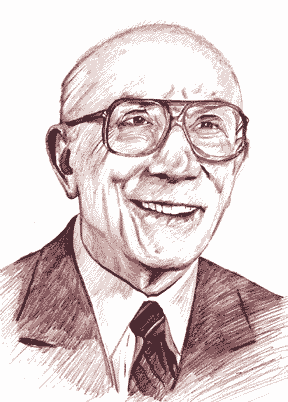INTERVIEW
Yale Hirsch: Market Historian
by John Sweeney
Yale Hirsch is best known as the editor and publisher of The Stock Trader's Almanac, now in its 33rd annual edition. He is a stock market historian and stock analyst who could probably tell you, within reason, what the stock market is likely to do any hour, on any day, in any future year. That's not the result of any clairvoyance on his part, but rather the result of his detailed analysis of historical stock market behavior and cycles in differing political and economic environments.
The January barometer is the best-known indicator formulated by Hirsch, and it states that as January goes, so goes the entire stock market year. Other indicators he is known for include the Santa Claus rally and the best six consecutive months of the year. A firm observer of seasonality, Hirsch tracks similar recurring phenomena in mutual funds, fast-growing companies, and trading situations. STOCKS & COMMDODITIES Editor John Sweeney caught up with the nation's market historian in late August 2000.

ILLUSTRATION BY CARL GREEN
How long have you been studying the markets?
I started off with Indicator Digest in 1961. Did you ever hear of
it?
No, I think that was before my time.
You would have liked it. We took all the indicators and made a composite
out of them. In early 1962, we predicted a bear market, and we were the
only ones who were predicting one in the country. Then, of course, President
John Kennedy obliged by getting angry with the steel companies, and we
had a mini-crash. We were on the map then because we were the only ones
in the country who had predicted the bear market.
What indicators were you using back then?
The advance-decline line, short interest, odd-lot short sales -- before
you had all the options -- highs and lows. They were probably similar to
the indicators that Joseph Granville did in his book. Do you know Joe Granville's
book?
I don't think I've read the book, but I am a big user of on-balance
volume (OBV).
This was his early book; I think it was published in 1959 or 1960.
How did you get into that anyway?
Well, my cousin was a songwriter.
A songwriter?
A famous songwriter. He wrote early Bing Crosby songs. He wrote "Cocktails
For Two," "My Old Flame," and "Everybody Loves Somebody
Sometime."
Sounds like my dad's records.
Do you know "My Old Flame"?
No, "Cocktails For Two" is the one I remember.
Spike Jones made fun of "My Old Flame," which is a famous jazz-type
song. He did it with a fire siren. So they may denigrate your work, but
the royalties make up for it.
But how did that get you into Indicator Digest?
Well, my cousin took a hit in the market once and he was annoyed by it.
But he was a student of anything he set his mind to, and he looked at the
market and thought he saw a gimmick. He put an ad in Barron's in
May 1961 -- I think it might have been a $300 ad for one full column then
-- and he was inundated. He asked me to join him and I turned him down,
but two days later, I accepted.
It was an ad for a subscription to a newsletter?
Yes. A publication called Indicator Digest, which would be a digest
of all the indicators. Everybody does it now, but he originated it. You
know, some people are pretty good at anything they tackle.
How long did that go on?
Well, I left in 1966 and he sold it in 1968.
I remember Art Merrill publishing a technical digest that had all
the different indicators that he thought were statistically significant.
Was it that same sort of thing?
Art was good. As a matter of fact, we were going to publish his book, but
he changed his mind. Some of the things I do in the Stock Trader's Almanac,
he did, but I must say I did them better. He was a strict statistician.
You cannot be that in the market. You have to bend. I was going to use
some of his material, but he asked I lift it intact, with his diagrams.
So I said no. I did it myself and I discovered I had better ways of doing
these things. He did good work, but he should have bent a little bit and
had a more open mind.
After you got out of Indicator Digest in 1966, where did you
go?
I wanted to do a number of things, including publishing. I was interested
in certain things I was collecting. I was collecting things that fascinated
me about certain seasonal phenomena.
You mean market data?
Yes. I am a visual person. You know those audio books people buy? I would
have trouble paying attention to them. I am more of a visual person. I
try to put data and charts together. It struck me if I did this on an annual
basis, it would do well. So I conjured up the almanac idea, as these were
seasonal phenomena, and the Stock Trader's Almanac was born. I started
in the middle of 1967 and the first edition was the 1968 almanac.
In the last 50 years, $10,000 invested during the best six months (November through April) gained the investor $363,367, but if you were to invest the same amount in the other six months of the year, the gain would have just been $11,582. -- Yale Hirsch
Excerpted from an article originally published in the December 2000 issue of Technical Analysis of STOCKS & COMMODITIES magazine. All rights reserved. © Copyright 2000, Technical Analysis, Inc.